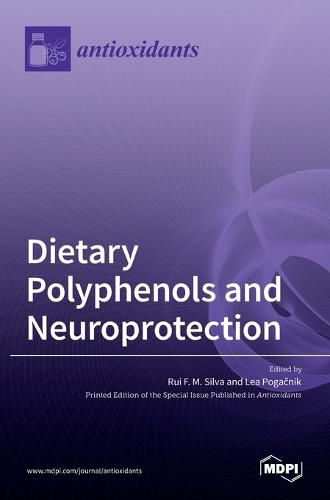Readings Newsletter
Become a Readings Member to make your shopping experience even easier.
Sign in or sign up for free!
You’re not far away from qualifying for FREE standard shipping within Australia
You’ve qualified for FREE standard shipping within Australia
The cart is loading…






This title is printed to order. This book may have been self-published. If so, we cannot guarantee the quality of the content. In the main most books will have gone through the editing process however some may not. We therefore suggest that you be aware of this before ordering this book. If in doubt check either the author or publisher’s details as we are unable to accept any returns unless they are faulty. Please contact us if you have any questions.
As editors of this book our aim was to collect new data from experienced authors in order to further advance the knowledge on the protective effects of polyphenols’ intake, e.g., when included in the human diet, to modulate cellular functions and pathways associated with neurodegenerative diseases.
Fruits and vegetables are the richest source of polyphenols in the regular human diet. Most of these molecules possess high antioxidant capacity, as well as several other important activities that can affect human health, among which anti-inflammatory properties and the potential ability to modulate different cell-signalling pathways seem to be the most important.
Neurodegenerative diseases are among the main causes of death worldwide and, in most of them like Alzheimer’s or Parkinson’s, neurodegeneration occurs long before the onset of first symptoms, where a large population of brain neurons are already lost. Besides neurons, glial cells like astrocytes and microglia, are involved in oxidative and neuroinflammatory pathological pathways, making them interesting targets for neuroprotective strategies. Polyphenols are promising candidates for those strategies, either as prophylactic substances or as therapeutic molecules.
In this book, several research papers and two reviews explore the chemical properties of naturally occurring polyphenols and some new possibilities for the therapeutical and/or prophylactic roles of these molecules on neurodegeneration and neurodegenerative diseases.
$9.00 standard shipping within Australia
FREE standard shipping within Australia for orders over $100.00
Express & International shipping calculated at checkout
This title is printed to order. This book may have been self-published. If so, we cannot guarantee the quality of the content. In the main most books will have gone through the editing process however some may not. We therefore suggest that you be aware of this before ordering this book. If in doubt check either the author or publisher’s details as we are unable to accept any returns unless they are faulty. Please contact us if you have any questions.
As editors of this book our aim was to collect new data from experienced authors in order to further advance the knowledge on the protective effects of polyphenols’ intake, e.g., when included in the human diet, to modulate cellular functions and pathways associated with neurodegenerative diseases.
Fruits and vegetables are the richest source of polyphenols in the regular human diet. Most of these molecules possess high antioxidant capacity, as well as several other important activities that can affect human health, among which anti-inflammatory properties and the potential ability to modulate different cell-signalling pathways seem to be the most important.
Neurodegenerative diseases are among the main causes of death worldwide and, in most of them like Alzheimer’s or Parkinson’s, neurodegeneration occurs long before the onset of first symptoms, where a large population of brain neurons are already lost. Besides neurons, glial cells like astrocytes and microglia, are involved in oxidative and neuroinflammatory pathological pathways, making them interesting targets for neuroprotective strategies. Polyphenols are promising candidates for those strategies, either as prophylactic substances or as therapeutic molecules.
In this book, several research papers and two reviews explore the chemical properties of naturally occurring polyphenols and some new possibilities for the therapeutical and/or prophylactic roles of these molecules on neurodegeneration and neurodegenerative diseases.